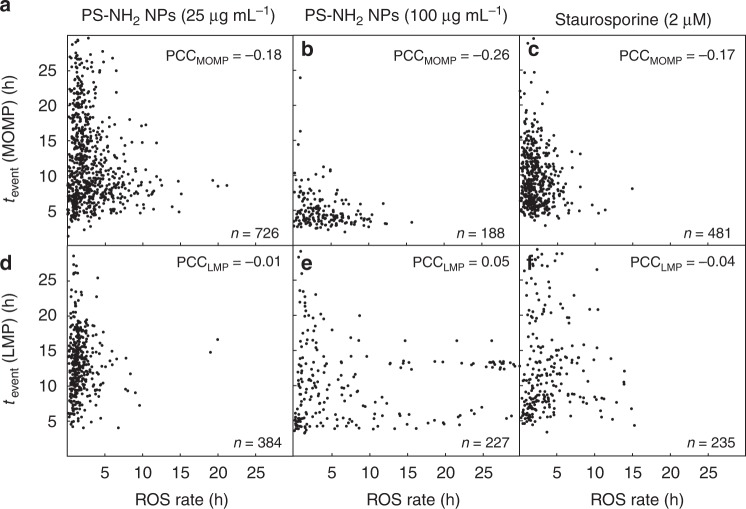Fig. 5.
Rates of reactive oxygen species (ROS) production correlate with mitochondrial outer membrane permeabilization (MOMP), but not with lysosomal membrane permeabilization (LMP). A549 cells were treated with 58 nm amino-modified polystyrene nanoparticles (PS-NH2 nanoparticles) at 25 µg mL−1 (a, d) or 100 µg mL−1 (b, e), or with STS (c, f). The ROS production rates were determined from the linear increase in the CellROX fluorescence and plotted versus the time of outer mitochondrial membrane breakdown (tevent(MOMP)) or lysosomal leakage (tevent(LMP)). An inverse relationship between ROS production rate and MOMP was observed for cells treated with nanoparticles at 25 and 100 µg mL−1 (a, b) as well as for STS (c). In contrast, no correlation was observed between ROS production rate and LMP (d–f). In the upper right corner, the Pearson correlation coefficient (PCC) is depicted for each plot, respectively. n is the number of cells shown in the respective plot

